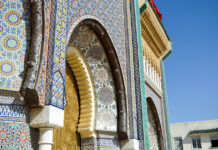Long overshadowed in Morocco’s economic narrative, the construction and public works sector (BTP) has undergone a dramatic transformation over the past decade, emerging as a strategic cornerstone of the nation’s development. Fueled by a powerful combination of public and private investment, the industry is now reshaping itself as a driving force in Morocco’s economic trajectory.
At the heart of this transformation are six major players dominating the market: TGCC, SGTM, Jet Contractors, Somagec, Sogea Maroc, and Bymaro. These companies are behind Morocco’s largest infrastructure and real estate projects, ranging from highways and public facilities to industrial buildings and major construction sites. Three of them—SGTM, TGCC, and Jet Contractors—are listed on the Casablanca Stock Exchange, each occupying a distinct position in the market based on the scale of their order books and financial results. SGTM leads in overall activity, followed by TGCC and Jet Contractors, forming a competitive but clearly structured industry landscape.
The sector has seen steady growth over the past ten years. Between 2014 and 2019, its gross value rose from 53.6 to 66.7 billion dirhams, reflecting an average annual growth rate of 4.5%. Although the pandemic brought a sudden halt in 2020, momentum quickly returned the following year as construction projects resumed and demand remained strong.
The real breakthrough came in 2024. The sector’s added value neared 90 billion dirhams, marking a remarkable 24% increase in just one year. This surge was driven by a mix of factors: reconstruction efforts in the High Atlas region following the earthquake, major investments in energy and transport infrastructure, and the revival of housing programs. The social impact has followed suit, with over 30,000 jobs created between 2022 and 2024—underscoring the sector’s capacity to generate employment and meet the country’s evolving needs.
The outlook for the short term remains optimistic. Forecasts for 2025 suggest the sector could reach nearly 100 billion dirhams in added value. Lower interest rates, targeted housing policies, and accelerated development of water and energy programs are all contributing to this positive trend.
Looking further ahead to 2030, projections indicate that the market could hit 122 billion dirhams, driven by average annual growth of 5.8%. This sustained momentum is underpinned by three major engines.
First is public investment. By the end of the decade, Morocco is expected to channel nearly 1,000 billion dirhams into large-scale national projects. Water infrastructure leads the charge, with 285 billion dirhams allocated to dams, treatment plants, and water security systems. The OCP Group is investing 260 billion dirhams to expand its industrial operations, logistics chains, and energy facilities. Energy infrastructure, including solar, wind, gas, and electric transport projects, accounts for another 167 billion dirhams. Transport modernization will absorb 189 billion dirhams, covering road and rail upgrades, airport expansions, and metropolitan transit systems—especially in preparation for the 2030 FIFA World Cup.
The second growth engine lies in the private sector, which is undergoing its own transformation. Morocco’s Ministry of Investment has set an ambitious target: 550 billion dirhams in private investment and 500,000 new jobs by 2026. To support this, a new Investment Charter is introducing region-specific incentives, streamlined administrative processes, and a governance model centered around Regional Investment Centers (CRI). Annual private investment already ranges between 110 and 130 billion dirhams, with the National Investment Commission having approved projects worth 377 billion dirhams in just two years.
Housing represents the third pillar. Morocco’s population is expected to exceed 39 million by 2030, with the majority living in urban areas. This demographic shift is placing growing pressure on housing and local infrastructure. Programs like “Daam Sakane” aim to boost home ownership and guide urban expansion. The combination of population growth and modernization is driving structural demand across the entire construction ecosystem.
As these three growth drivers gain momentum, the BTP sector is cementing its status as one of the few industries offering long-term visibility, stability, and sustainable economic impact. For investors, it represents fertile ground for opportunity. For the government, it’s a powerful tool for transformation. And for the nation, it lays the foundation for the decades to come.





